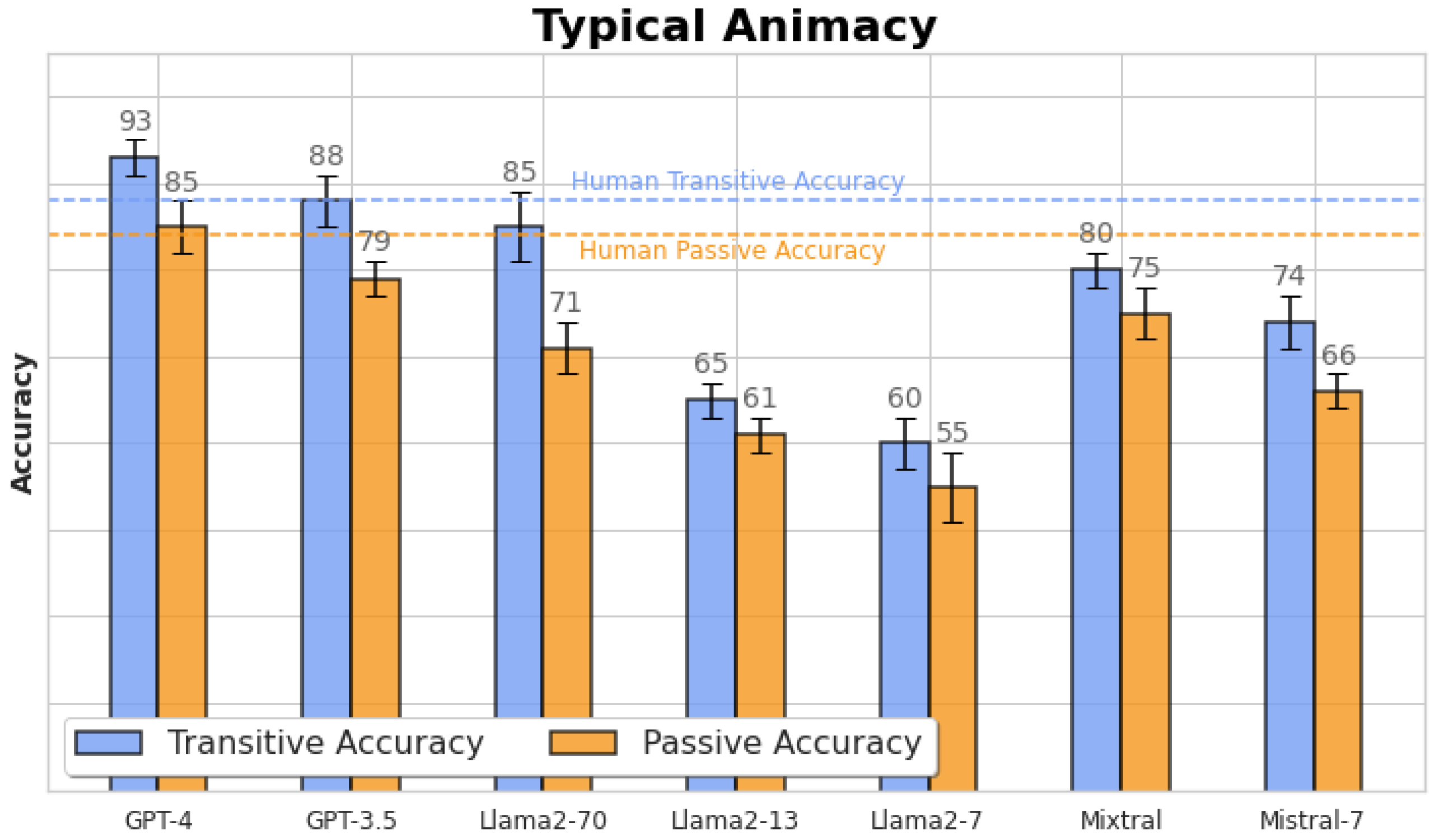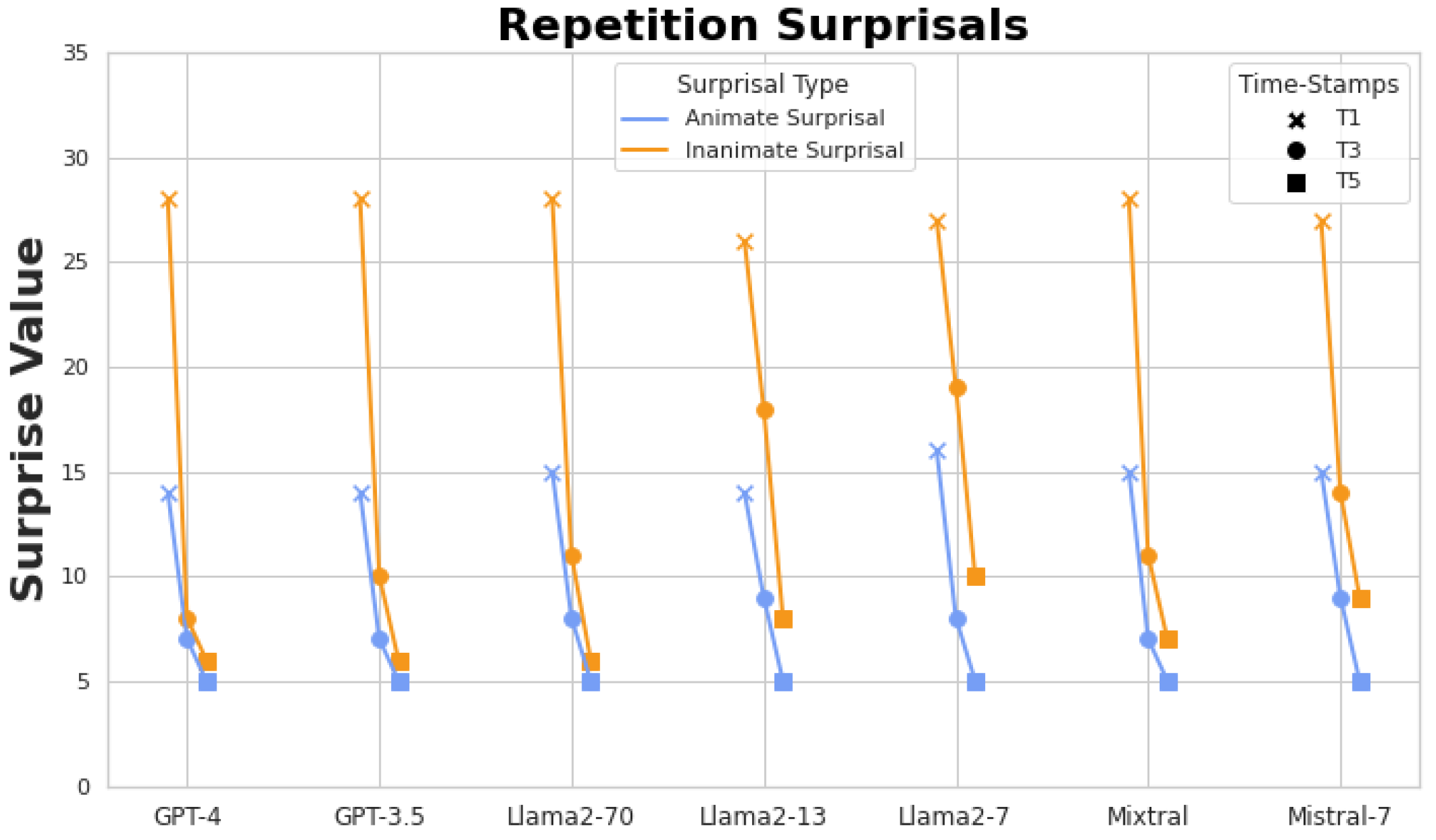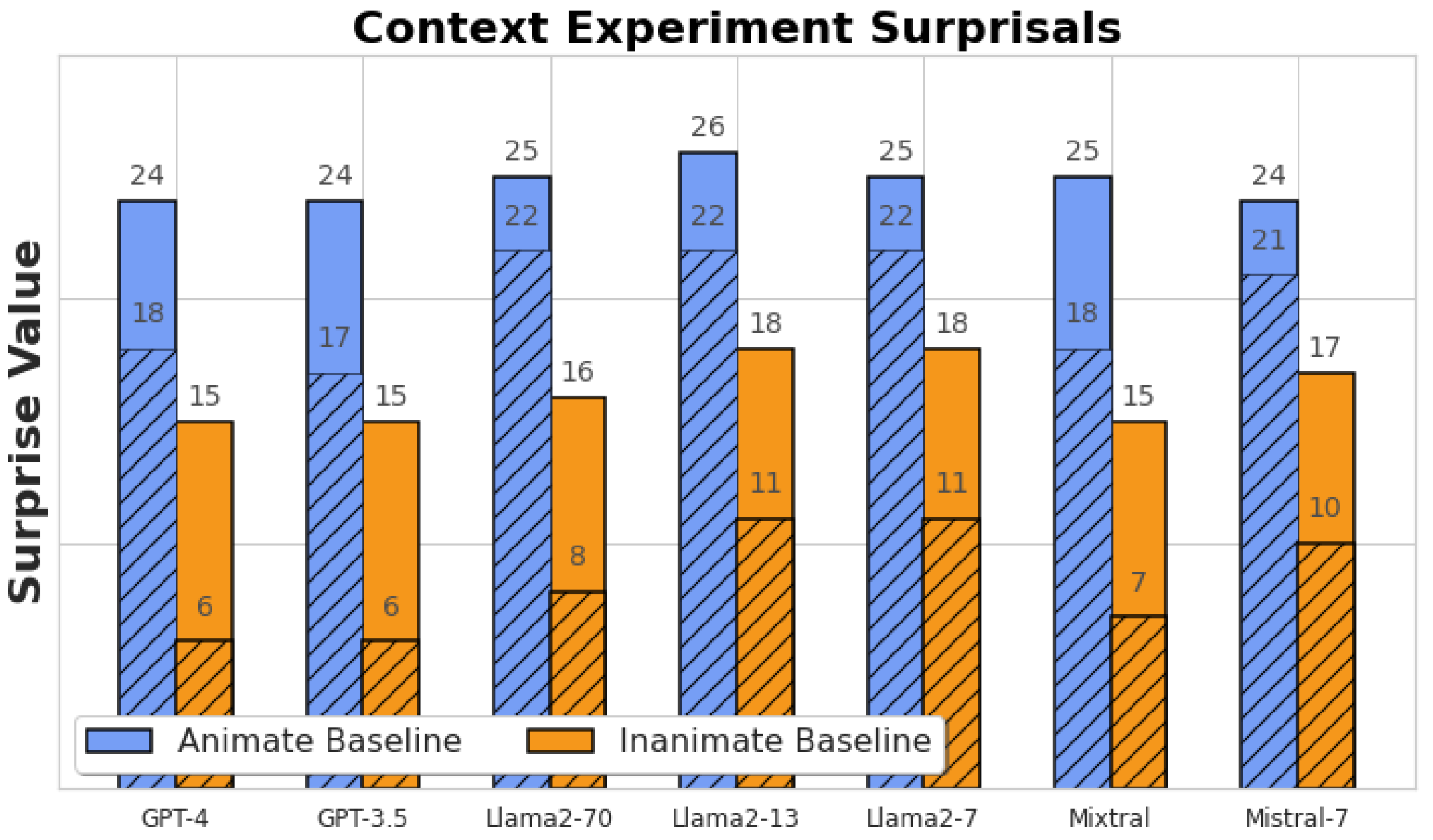Author Contributions
Conceptualization, L.R. and G.P.; methodology, L.R. and G.P.; software, L.R.; validation, L.R., G.P., and F.M.Z.; formal analysis, L.R. and G.P.; investigation, L.R., G.P., and F.M.Z.; resources, L.R. and G.P.; writing—original draft preparation, L.R. and G.P.; supervision, L.R. and F.M.Z.; project administration, L.R. and G.P. All authors have read and agreed to the published version of the manuscript.
Funding
This research received no external funding.
Institutional Review Board Statement
Not applicable.
Informed Consent Statement
Not applicable. We reported comparative results from previous studies and did not do any kind of analysis on humans.
Data Availability Statement
The data and models used are all available and can be supplied free of charge on request. All techniques have been reported in
Section 3 and the appendices.
Conflicts of Interest
The authors declare no conflict of interest.
References
- Mao, R.; Liu, Q.; Li, X.; Cambria, E.; Hussain, A. Guest Editorial: Cognitive Analysis for Humans and AI. Cogn. Comput. 2024, 16, 3316–3318. [Google Scholar] [CrossRef]
- New, J.; Cosmides, L.; Tooby, J. Category-specific attention for animals reflects ancestral priorities, not expertise. Proc. Natl. Acad. Sci. USA 2007, 104, 16598–16603. [Google Scholar] [CrossRef] [PubMed]
- Nairne, J.S.; VanArsdall, J.E.; Pandeirada, J.N.S.; Cogdill, M.; LeBreton, J.M. Adaptive Memory: The Mnemonic Value of Animacy. Psychol. Sci. 2013, 24, 2099–2105. [Google Scholar] [CrossRef] [PubMed]
- Ghisellini, R.; Pareschi, R.; Pedroni, M.; Raggi, G.B. Recommending Actionable Strategies: A Semantic Approach to Integrating Analytical Frameworks with Decision Heuristics. Information 2025, 16, 192. [Google Scholar] [CrossRef]
- Bulla, L.; Midolo, A.; Mongiovì, M.; Tramontana, E. EX-CODE: A Robust and Explainable Model to Detect AI-Generated Code. Information 2024, 15, 819. [Google Scholar] [CrossRef]
- Ranaldi, L.; Pucci, G. Knowing Knowledge: Epistemological Study of Knowledge in Transformers. Appl. Sci. 2023, 13, 677. [Google Scholar] [CrossRef]
- Ranaldi, L.; Fallucchi, F.; Zanzotto, F.M. Dis-Cover AI Minds to Preserve Human Knowledge. Future Internet 2022, 14, 10. [Google Scholar] [CrossRef]
- OpenAI. GPT-4 Technical Report. arXiv 2022, arXiv:2303.08774. [Google Scholar]
- Chowdhery, A.; Narang, S.; Devlin, J.; Bosma, M.; Mishra, G.; Roberts, A.; Barham, P.; Chung, H.W.; Sutton, C.; Gehrmann, S.; et al. PaLM: Scaling Language Modeling with Pathways. arXiv 2022, arXiv:2204.02311. [Google Scholar]
- Touvron, H.; Martin, L.; Stone, K.; Albert, P.; Almahairi, A.; Babaei, Y.; Bashlykov, N.; Batra, S.; Bhargava, P.; Bhosale, S.; et al. Llama 2: Open Foundation and Fine-Tuned Chat Models. arXiv 2023, arXiv:2307.09288. [Google Scholar]
- Warstadt, A.; Parrish, A.; Liu, H.; Mohananey, A.; Peng, W.; Wang, S.F.; Bowman, S.R. BLiMP: The Benchmark of Linguistic Minimal Pairs for English. Trans. Assoc. Comput. Linguist. 2020, 8, 377–392. [Google Scholar] [CrossRef]
- Spiliopoulou, E.; Pagnoni, A.; Bisk, Y.; Hovy, E. EvEntS ReaLM: Event Reasoning of Entity States via Language Models. In Proceedings of the 2022 Conference on Empirical Methods in Natural Language Processing, Abu Dhabi, United Arab Emirates, 7–11 December 2022; pp. 1982–1997. [Google Scholar] [CrossRef]
- Hanna, M.; Belinkov, Y.; Pezzelle, S. When Language Models Fall in Love: Animacy Processing in Transformer Language Models. In Proceedings of the 2023 Conference on Empirical Methods in Natural Language Processing, Singapore, 6–10 December 2023; Bouamor, H., Pino, J., Bali, K., Eds.; pp. 12120–12135. [Google Scholar] [CrossRef]
- Nieuwland, M.S.; Van Berkum, J.J.A. When Peanuts Fall in Love: N400 Evidence for the Power of Discourse. J. Cogn. Neurosci. 2006, 18, 1098–1111. [Google Scholar] [CrossRef]
- García, M.G.; Primus, B.; Himmelmann, N.P. Shifting from animacy to agentivity. Theor. Linguist. 2018, 44, 25–39. [Google Scholar] [CrossRef]
- Gass, S.M. A Review of Interlanguage Syntax: Language Transfer and Language Universals. Lang. Learn. 1984, 34, 115–132. [Google Scholar] [CrossRef]
- Vihman, V.A.; Nelson, D. Effects of Animacy in Grammar and Cognition: Introduction to Special Issue. Open Linguist. 2019, 5, 260–267. [Google Scholar] [CrossRef]
- Caplan, D.; Hildebrandt, N.; Waters, G.S. Interaction of verb selectional restrictions, noun animacy and syntactic form in sentence processing. Lang. Cogn. Process. 1994, 9, 549–585. [Google Scholar] [CrossRef]
- Buckle, L.; Lieven, E.; Theakston, A.L. The Effects of Animacy and Syntax on Priming: A Developmental Study. Front. Psychol. 2017, 8, 2246. [Google Scholar] [CrossRef]
- Bresnan, J.; Hay, J. Gradient grammar: An effect of animacy on the syntax of give in New Zealand and American English. Lingua 2008, 118, 245–259. [Google Scholar] [CrossRef]
- Rosenbach, A. Animacy and grammatical variation—Findings from English genitive variation. Lingua 2008, 118, 151–171. [Google Scholar] [CrossRef]
- Ferreira, F. Choice of Passive Voice is Affected by Verb Type and Animacy. J. Mem. Lang. 1994, 33, 715–736. [Google Scholar] [CrossRef]
- Fairclough, N. The language of critical discourse analysis: Reply to Michael Billig. Discourse Soc. 2008, 19, 811–819. [Google Scholar] [CrossRef]
- Brown, T.B.; Mann, B.; Ryder, N.; Subbiah, M.; Kaplan, J.; Dhariwal, P.; Neelakantan, A.; Shyam, P.; Sastry, G.; Askell, A.; et al. Language Models are Few-Shot Learners. arXiv 2020, arXiv:2005.14165. [Google Scholar]
- Wei, J.; Tay, Y.; Bommasani, R.; Raffel, C.; Zoph, B.; Borgeaud, S.; Yogatama, D.; Bosma, M.; Zhou, D.; Metzler, D.; et al. Emergent Abilities of Large Language Models. arXiv 2022, arXiv:2206.07682. [Google Scholar]
- Wei, J.; Wang, X.; Schuurmans, D.; Bosma, M.; Ichter, B.; Xia, F.; Chi, E.; Le, Q.; Zhou, D. Chain-of-Thought Prompting Elicits Reasoning in Large Language Models. arXiv 2023, arXiv:2201.11903. [Google Scholar]
- Ouyang, L.; Wu, J.; Jiang, X.; Almeida, D.; Wainwright, C.L.; Mishkin, P.; Zhang, C.; Agarwal, S.; Slama, K.; Ray, A.; et al. Training language models to follow instructions with human feedback. arXiv 2022, arXiv:2203.02155. [Google Scholar]
- Ranaldi, L.; Pucci, G.; Haddow, B.; Birch, A. Empowering Multi-step Reasoning across Languages via Program-Aided Language Models. In Proceedings of the 2024 Conference on Empirical Methods in Natural Language Processing, Miami, FL, USA, 12–16 November 2024; Al-Onaizan, Y., Bansal, M., Chen, Y.-N., Eds.; Association for Computational Linguistics: Stroudsburg, PA, USA, 2024; pp. 12171–12187. [Google Scholar] [CrossRef]
- Liu, H.; Ning, R.; Teng, Z.; Liu, J.; Zhou, Q.; Zhang, Y. Evaluating the Logical Reasoning Ability of ChatGPT and GPT-4. arXiv 2023, arXiv:2304.03439. [Google Scholar]
- Ranaldi, L.; Freitas, A. Aligning Large and Small Language Models via Chain-of-Thought Reasoning. In Proceedings of the 18th Conference of the European Chapter of the Association for Computational Linguistics (Volume 1: Long Papers), St. Julian’s, Malta, 17–22 March 2024; Graham, Y., Purver, M., Eds.; Association for Computational Linguistics: Stroudsburg, PA, USA, 2024; pp. 1812–1827. [Google Scholar]
- Bubeck, S.; Chandrasekaran, V.; Eldan, R.; Gehrke, J.; Horvitz, E.; Kamar, E.; Lee, P.; Lee, Y.T.; Li, Y.; Lundberg, S.; et al. Sparks of artificial general intelligence: Early experiments with gpt-4. arXiv 2023, arXiv:2303.12712. [Google Scholar]
- Sap, M.; Le Bras, R.; Fried, D.; Choi, Y. Neural Theory-of-Mind? On the Limits of Social Intelligence in Large LMs. In Proceedings of the 2022 Conference on Empirical Methods in Natural Language Processing, Abu Dhabi, United Arab Emirates, 7–11 December 2022; pp. 3762–3780. [Google Scholar] [CrossRef]
- Ranaldi, L.; Pucci, G. When Large Language Models Contradict Humans? Large Language Models’ Sycophantic Behaviour. arXiv 2024, arXiv:2311.09410. [Google Scholar]
- Ettinger, A. What BERT Is Not: Lessons from a New Suite of Psycholinguistic Diagnostics for Language Models. Trans. Assoc. Comput. Linguist. 2020, 8, 34–48. [Google Scholar] [CrossRef]
- Sinclair, A.; Jumelet, J.; Zuidema, W.; Fernández, R. Structural Persistence in Language Models: Priming as a Window into Abstract Language Representations. Trans. Assoc. Comput. Linguist. 2022, 10, 1031–1050. [Google Scholar] [CrossRef]
- Michaelov, J.A.; Coulson, S.; Bergen, B.K. Can Peanuts Fall in Love with Distributional Semantics? arXiv 2023, arXiv:2301.08731. [Google Scholar]
- Smith, N.J.; Levy, R. The effect of word predictability on reading time is logarithmic. Cognition 2013, 128, 302–319. [Google Scholar] [CrossRef] [PubMed]
- Aurnhammer, C.; Frank, S. Comparing Gated and Simple Recurrent Neural Network Architectures as Models of Human Sentence Processing. In Proceedings of the Annual Meeting of the Cognitive Science Society, Madison, WI, USA, 25–28 July 2018. [Google Scholar]
- Michaelov, J.; Bergen, B. How well does surprisal explain N400 amplitude under different experimental conditions? In Proceedings of the 24th Conference on Computational Natural Language Learning, Online, 19–20 November 2020; pp. 652–663. [Google Scholar] [CrossRef]
- Goodkind, A.; Bicknell, K. Predictive power of word surprisal for reading times is a linear function of language model quality. In Proceedings of the 8th Workshop on Cognitive Modeling and Computational Linguistics (CMCL 2018), Salt Lake City, UT, USA, 13 December 2018; pp. 10–18. [Google Scholar] [CrossRef]
- Truong, T.H.; Baldwin, T.; Verspoor, K.; Cohn, T. Language models are not naysayers: An analysis of language models on negation benchmarks. In Proceedings of the 12th Joint Conference on Lexical and Computational Semantics (*SEM 2023), Toronto, ON, Canada, 13–14 July 2023; pp. 101–114. [Google Scholar] [CrossRef]
- Kauf, C.; Ivanova, A.A.; Rambelli, G.; Chersoni, E.; She, J.S.; Chowdhury, Z.; Fedorenko, E.; Lenci, A. Event knowledge in large language models: The gap between the impossible and the unlikely. arXiv 2023, arXiv:2212.01488. [Google Scholar] [CrossRef] [PubMed]
- Caramazza, A.; Shelton, J.R. Domain-Specific Knowledge Systems in the Brain: The Animate-Inanimate Distinction. J. Cogn. Neurosci. 1998, 10, 1–34. [Google Scholar] [CrossRef] [PubMed]
- Jiang, A.Q.; Sablayrolles, A.; Mensch, A.; Bamford, C.; Chaplot, D.S.; de las Casas, D.; Bressand, F.; Lengyel, G.; Lample, G.; Saulnier, L.; et al. Mistral 7B. arXiv 2023, arXiv:2310.06825. [Google Scholar]
- Jiang, A.Q.; Sablayrolles, A.; Roux, A.; Mensch, A.; Savary, B.; Bamford, C.; Chaplot, D.S.; de las Casas, D.; Hanna, E.B.; Bressand, F.; et al. Mixtral of Experts. arXiv 2024, arXiv:2401.04088. [Google Scholar]
- Kojima, T.; Gu, S.S.; Reid, M.; Matsuo, Y.; Iwasawa, Y. Large Language Models are Zero-Shot Reasoners. arXiv 2023, arXiv:2205.11916. [Google Scholar]
- Vega-Mendoza, M.; Pickering, M.J.; Nieuwland, M.S. Concurrent use of animacy and event-knowledge during comprehension: Evidence from event-related potentials. Neuropsychologia 2021, 152, 107724. [Google Scholar] [CrossRef]
- Boudewyn, M.A.; Blalock, A.R.; Long, D.L.; Swaab, T.Y. Adaptation to Animacy Violations during Listening Comprehension. Cogn. Affect. Behav. Neurosci. 2019, 19, 1247–1258. [Google Scholar] [CrossRef]
- Zheng, C.; Zhou, H.; Meng, F.; Zhou, J.; Huang, M. Large Language Models Are Not Robust Multiple Choice Selectors. arXiv 2024, arXiv:2309.03882. [Google Scholar]
- Ranaldi, L.; Freitas, A. Self-Refine Instruction-Tuning for Aligning Reasoning in Language Models. In Proceedings of the 2024 Conference on Empirical Methods in Natural Language Processing, Miami, FL, USA, 12–16 November 2024; Al-Onaizan, Y., Bansal, M., Chen, Y.-N., Eds.; Association for Computational Linguistics: Stroudsburg, PA, USA, 2024; pp. 2325–2347. [Google Scholar] [CrossRef]
- Ranaldi, L.; Pucci, G. Multilingual Reasoning via Self-training. In Proceedings of the 2025 Conference of the Nations of the Americas Chapter of the Association for Computational Linguistics: Human Language Technologies (Volume 1: Long Papers), Albuquerque, NM, USA, 29 April–4 May 2025; Chiruzzo, L., Ritter, A., Wang, L., Eds.; Association for Computational Linguistics: Stroudsburg, PA, USA, 2025; pp. 11566–11582. [Google Scholar]
- Ranaldi, L.; Haddow, B.; Birch, A. When Natural Language is Not Enough: The Limits of In-Context Learning Demonstrations in Multilingual Reasoning. In Findings of the Association for Computational Linguistics: NAACL 2025; Chiruzzo, L., Ritter, A., Wang, L., Eds.; Association for Computational Linguistics: Stroudsburg, PA, USA, 2025; pp. 7369–7396. [Google Scholar]
- Ranaldi, L.; Ranaldi, F.; Fallucchi, F.; Zanzotto, F.M. Shedding Light on the Dark Web: Authorship Attribution in Radical Forums. Information 2022, 13, 435. [Google Scholar] [CrossRef]
| Disclaimer/Publisher’s Note: The statements, opinions and data contained in all publications are solely those of the individual author(s) and contributor(s) and not of MDPI and/or the editor(s). MDPI and/or the editor(s) disclaim responsibility for any injury to people or property resulting from any ideas, methods, instructions or products referred to in the content. |
© 2025 by the authors. Licensee MDPI, Basel, Switzerland. This article is an open access article distributed under the terms and conditions of the Creative Commons Attribution (CC BY) license (https://creativecommons.org/licenses/by/4.0/).










